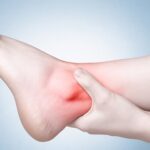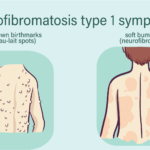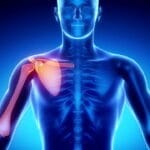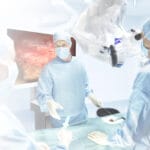What is Ulnar Collateral Ligament (UCL) Reconstruction?
UCL reconstruction is a surgical procedure to repair the ulnar collateral ligament, a key stabiliser on the inner side of the elbow. This ligament is crucial for elbow stability, particularly in athletes who perform overhead motions. The surgery primarily focuses on reconstructing the anterior band of the UCL.
Understanding UCL Anatomy
Anatomy of the UCL
- Origin: The UCL originates from the inferior aspect of the medial epicondyle of the humerus.
- Insertion: It inserts onto the sublime tubercle of the ulna.
- Bands: The UCL consists of three bands: anterior, posterior, and transverse.
Function of the UCL Components
- Anterior Band: Provides primary resistance to valgus stress between 20 and 120 degrees of elbow flexion. It has anterior and posterior bundles that tighten reciprocally during elbow movements.
- Posterior and Transverse Bands: Contribute to overall stability but are less critical than the anterior band.
Causes of UCL Injuries
Pathogenesis
- Trauma: Direct impact or a fall on an outstretched hand can cause UCL tears.
- Overhead Sports: Repetitive valgus stress in sports like baseball, javelin, and volleyball can lead to UCL injuries.
Common Sports Involved
- Baseball: Especially pitchers.
- Javelin Throwing
- Volleyball
- Other Sports: Football, wrestling, and tennis.
Symptoms and Diagnosis
Patient History and Symptoms
- Pain: Medial elbow pain, often described as sharp or popping during activity.
- Numbness/Tingling: Possible if the ulnar nerve is affected.
- Instability: Rarely reported unless there is concurrent flexor-pronator mass or ulnar nerve injury.
Physical Examination
- Tests: Moving valgus stress test and the milking test, both eliciting pain along the UCL.
- Valgus Stress Testing: May cause pain but rarely shows laxity.
- Palpation: Pain in the posteromedial olecranon in chronic cases and lateral-sided compression.
Imaging and Diagnostic Studies
Radiography
- Plain X-rays: Useful for detecting bony avulsions, fractures, or osteophytes.
- Stress Radiographs: Helpful in cases of significant instability.
MRI and Other Imaging
- MRI: Preferred for detailed visualisation of the UCL and associated structures. The T-sign is indicative of UCL injury.
- CT Arthrogram: Alternative when MRI is not available.
- Stress Ultrasound: Useful in subtle injuries or failed nonoperative treatments.
Treatment Options
Nonoperative Management
- Rest and Rehabilitation: Initial treatment includes rest, NSAIDs, and rehabilitation focusing on shoulder and scapular strengthening.
- Hinged Elbow Brace: Used for athletes not involved in overhead sports.
- Rehabilitation Program: Involves progressive throwing and strengthening exercises, typically requiring 8 to 12 weeks.
Surgical Management
Indications for Surgery
- Failed Nonoperative Treatment: Persistent symptoms despite conservative measures.
- High-Demand Athletes: Athletes wishing to return to sports that place valgus stress on the elbow.
Surgical Procedure
- Graft Selection: Commonly uses a palmaris longus autograft. Alternatives include hamstring, plantaris, or Achilles tendon grafts. Allografts can also be used.
- Ulnar Nerve Management: Evaluated and possibly decompressed or transposed if symptomatic.
- Concurrent Pathologies: Managed with arthroscopy if present.
Preoperative Planning
- Graft Availability: Assessing for the presence of the palmaris longus tendon.
- Nerve Symptoms: Evaluating for ulnar nerve symptoms and potential surgical treatment.
- Full Elbow Motion: Ensuring return of full motion before surgery.
Positioning and Approach
- Patient Positioning: Supine position with a hand table, transitioning as needed for elbow arthroscopy.
- Incision: Medial incision centered over the medial epicondyle.
- Techniques: Common techniques include the Jobe figure-of-eight and the docking technique, both providing comparable valgus stability to the native ligament.
Recovery and Rehabilitation
Postoperative Care
- Immobilization: Initial period of immobilization followed by progressive rehabilitation.
- Physical Therapy: Focus on restoring range of motion and strength.
- Return to Sports: Gradual return to sports-specific activities, typically several months post-surgery.
Conclusion
UCL reconstruction is a vital procedure for restoring elbow stability, especially in athletes involved in overhead sports. Proper diagnosis, surgical intervention, and postoperative care are essential for achieving optimal outcomes and returning to normal activities. Always follow your doctor’s advice and attend follow-up appointments to ensure the best recovery outcome.







